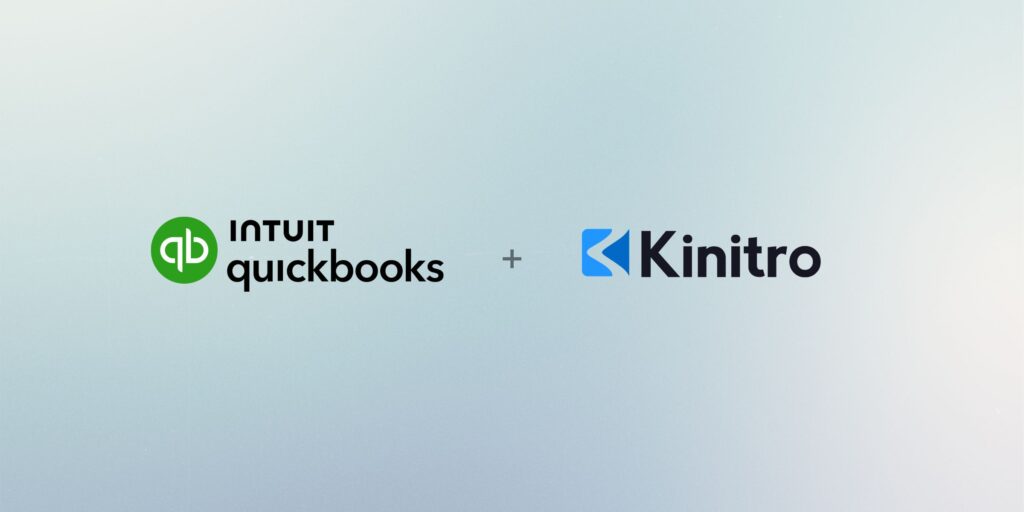Are you looking for ways to boost your sales team’s performance and motivation? A well-designed sales incentive program may be the key to unlocking your team’s full potential.
In this blog post, we will discuss the power of sales incentives, explore various types of incentives, and guide you through designing, monitoring, and adjusting your customized sales incentive program.
We will also share real-life examples of successful programs and common pitfalls to avoid, so you can create a program that drives maximum sales performance.
Key Takeaways
- Sales incentives are a powerful tool for motivating and engaging sales teams.
- Designing an effective program tailored to team needs is key to success.
- Balance monetary & non-monetary rewards, promote collaboration & healthy competition, set clear goals & regularly review the program for maximum performance!
The Power of Sales Incentives
Every sales leader recognizes the importance of a motivated and engaged sales team in reaching targets and satisfying customer demands.
Sales incentives can profoundly influence your team’s performance, motivation, and overall success, marking them as a fundamental aspect of sales management.
Some types of sales incentives include:
- Monetary incentives, such as cash rewards and financial bonuses, which can provide a direct boost to your sales team’s productivity.
- Non-monetary incentives, such as recognition and praise, which can help boost morale and motivation.
- Career development opportunities, such as training programs or promotions, which can provide long-term motivation and growth for your sales professionals.
- Team-building activities and events, which can foster a sense of camaraderie and teamwork among your sales team.
It is best to consider a combination of sales incentives that meet the preferences of your sales team.
Sales training is an integral component of any successful sales incentive program. By investing in the professional development of your sales team, you can equip them with the skills and knowledge they need to excel in their roles, whether they’re dealing with long sales cycles or focusing on customer retention.
Also, offering employee stock options or similar incentives can significantly enhance employee retention, demonstrating your company’s dedication to its staff and their long-term success.
Sales incentives should not only be about motivating top-performing sales reps. A well-designed sales incentive program should also aim to inspire and engage the entire sales team, making sure everyone has a fair chance to benefit from the rewards.
Offering a combination of monetary and non-monetary incentives ensures that your sales incentive program attracts all types of sales reps, leading to improved results and a more motivated team overall.

Types of Sales Incentives: A Comprehensive Guide
Understanding the various types of sales incentives available is key to designing an effective sales incentive program.
Role-specific incentives, for example, can be tailored to meet the unique needs of different positions within your sales team, ensuring that every sales rep has the motivation and resources they need to succeed.
Split sales incentives, on the other hand, promote collaboration by rewarding all team members involved in closing a deal, fostering a sense of teamwork and fairness.
Pre-sales incentives can be a powerful tool to help your sales team reach its goals by offering rewards for achieving specific milestones in the sales process.
Omnichannel sales incentives, which reward sales reps for providing outstanding support and value to customers regardless of where they make a purchase, can also be highly beneficial for sales managers to implement.
Analytics-based sales incentives, which leverage data to reward sales reps for closing deals within or before target timeframes, can help you drive even better results from your sales team.
Considering the unique needs and preferences of your sales team is significant when selecting sales incentive ideas. Creating a sales incentive program that motivates your sales reps and drives sales performance involves choosing a mix of:
- Cash rewards
- Professional development opportunities
- Sales contests
- Other incentives
This will ultimately assist your business in achieving its objectives.
Designing a Customized Sales Incentive Program
Customizing your sales incentive program is the key to success. It involves:
- Evaluating your team’s needs
- Striking the right balance between monetary and non-monetary rewards
- Creating an environment of collaboration and healthy competition
By assessing your sales team’s needs and preferences, you can design a program that is tailored to their unique requirements, making it more effective in motivating and engaging them.
Besides selecting the appropriate types of sales incentives, considering how your program will be structured and managed is also important. This involves setting clear goals and metrics, consistently reviewing and updating incentives, and collecting feedback from your sales reps.
Continuously monitoring and adjusting your sales incentive program ensures its’ alignment with the changing needs and goals of your team and your organization as a whole.
Assessing Your Sales Team’s Needs
Comprehending your sales team’s needs is fundamental for designing an effective sales incentive program. A clear understanding of the organizational structure and success assurance can be gained by carefully evaluating your company’s sales methodologies, processes, and roles.
Sales performance analysis is a key tool for understanding your sales team’s needs. It provides you with valuable insights into how your sales reps are performing, highlighting which reps are meeting their targets and which ones require additional support.
Identifying areas that need improvement allows for the implementation of strategies to maximize performance. These strategies can include providing extra training, setting clear objectives and metrics, and offering incentives to inspire sales reps.
Tailoring your sales incentive program to the unique needs of your sales team allows you to create a program that drives superior results and maintains team motivation and engagement.
Balancing Monetary and Non-Monetary Rewards
A careful balance between monetary and non-monetary rewards is required to maximize the effectiveness of your sales incentive program.
Monetary incentives, such as cash bonuses or financial rewards, can provide a direct boost to your sales team’s motivation and productivity. However, relying solely on monetary incentives can lead to a narrow focus on short-term gains and may not be sustainable in the long run.
Non-monetary rewards, on the other hand, offer a more diverse range of benefits. These can include professional development opportunities, access to mentoring sessions with company leaders, and memberships to gyms, theater clubs, or recreation centers.
Offering a mix of monetary and non-monetary rewards enables you to create a sales incentive program that appeals to all types of sales reps, promotes long-term success, and enhances overall performance.
Encouraging Collaboration and Healthy Competition
Promoting a sense of collaboration and healthy competition within your sales team is key to maximizing the effectiveness of your sales incentive program. Here are some strategies to consider:
- Offer both individual and team-based incentives to promote teamwork and ensure that everyone on the team is motivated to achieve their goals.
- Create an environment where sales reps can learn from one another, share knowledge, and support each other’s success.
- Encourage open communication and regular team meetings to foster collaboration and idea sharing.
- Recognize and reward top performers to motivate the entire team.
- Provide ongoing training and development opportunities to help sales reps improve their skills and reach their full potential.
By implementing these strategies, you can motivate your sales team and create a more high-performing group.
The buddy system, which pairs top sales performers with lower performers to enable knowledge sharing, is one effective way to promote collaboration and healthy competition.
Top performers are able to reach their full potential because of this. Lower performers can also learn from more successful colleagues, contributing to the growth and success of the team.
Incorporating collaboration and healthy competition into your sales incentive program creates a more unified and motivated sales team.
Monitoring and Adjusting Your Sales Incentive Program
Continuously monitoring and adjusting your program based on performance data, feedback, and best practices is essential to ensure the success of your sales incentive program.
Setting clear goals and metrics is a crucial first step in this process, as it allows you to measure your team’s performance, identify areas for improvement, and track progress towards your objectives.
By regularly reviewing and updating your program, you can ensure it remains aligned with the needs and goals of your sales team and the organization as a whole.
Another important aspect of monitoring and adjusting your sales incentive program is gathering feedback from your sales reps. Their input can help you identify areas for improvement, recognize successful strategies, and uncover any challenges or obstacles they may be facing.
By taking their feedback into account, you can make smarter decisions, create incentives that truly motivate and engage your sales reps, and ultimately drive better sales performance.
Setting Clear Goals and Metrics
For maximizing the effectiveness of your sales incentive program, setting clear goals and metrics for your sales team is essential.
By establishing specific, measurable, achievable, relevant, and time-bound (SMART) objectives, you can provide your sales reps with clear targets to work towards and a roadmap for success. This not only helps to keep your team focused and motivated but also enables you to measure their performance and identify areas for improvement.
To measure the success of your sales team, consider using key performance indicators (KPIs) that align with your program’s objectives. Examples of KPIs include:
- Monthly sales growth
- Quota success rate
- Customer satisfaction
- Sales cycle length
- Number of leads generated
By tracking and analyzing these metrics, you can gain valuable insights into your team’s performance, make informed decisions, and implement strategies to maximize their potential.
Regularly Reviewing and Updating Incentives
Maintaining motivation and engagement requires keeping your sales incentive program fresh and aligned with the evolving needs and goals of your sales team and organization.
Regularly reviewing and updating your program ensures that your incentives remain relevant, appealing, and effective in driving sales performance. This could involve adding new incentives, adjusting existing ones, or even removing incentives that are no longer effective.
By conducting periodic reviews based on data, feedback, and best practices, you can stay ahead of the curve and maximize your sales incentive opportunities. Whether you choose to review your program quarterly, semi-annually, or annually, it’s essential to make adjustments based on the insights you gather.
This proactive approach will ensure your sales incentive program remains a powerful tool for motivating your sales team and driving better results.
Soliciting Feedback from Sales Reps
Sales reps’ feedback is invaluable for optimizing and improving your sales incentive program. As the people who are directly involved in the sales process, sales reps have a unique understanding of customers, products, and the sales strategy.
Their input can help you identify areas for improvement, recognize successful strategies, and uncover any challenges or obstacles they may be facing.
To solicit valuable feedback from your sales reps, consider using several techniques such as:
- Asking open-ended questions
- Providing a feedback framework
- Focusing on strengths and opportunities
- Giving feedback regularly and timely
- Implementing the feedback received to further enhance your sales performance.
Incorporating your sales reps’ feedback into your sales incentive program allows you to create a more effective and motivating program that drives improved sales performance and helps to motivate reps.
Real-Life Examples of Successful Sales Incentive Programs
Learning from real-life examples of successful sales incentive programs can provide valuable insights and inspiration for designing your own program.
One such example is Ambition, a company that created a proprietary sales management platform. They ran a month-long sales contest, with the prize being a billboard in any location filled with the winner’s choice of content – an exciting incentive for any salesperson. The contest fostered healthy competition among sales reps and drove impressive results for the company.
Another inspiring example comes from the cable TV industry, where a company put together an amazing swag bag filled with merchandise from various channels, such as HBO, ESPN, and TNT. This creative sales incentive generated excitement among the sales team and motivated them to work hard to earn the rewards.
In the retail industry, successful sales incentives programs have included games, commission-based programs, and monetary and non-monetary rewards, all of which have been proven to be highly motivating for sales staff as part of a well-designed sales incentive plan.
These real-life examples demonstrate the power of well-designed sales incentive programs in driving sales performance and motivating sales teams. By learning from these successful programs, you can create your own sales incentive program that not only engages and motivates your sales reps but also helps your business achieve its objectives.
Common Pitfalls to Avoid in Sales Incentive Programs
While sales incentive programs can effectively boost sales performance, it’s important to avoid common pitfalls that can undermine their success. One such pitfall is neglecting team input when designing your sales incentive program. Failing to consider the needs and preferences of your sales team can lead to:
- demotivation
- unfairness
- suboptimal customer service
- underperformance
By involving your team in the design and implementation of your program, you can create a more effective and motivating sales incentive program.
Another common mistake is focusing on a single winner in your sales incentive program. This approach can encourage a highly competitive atmosphere and may not be motivating for non-top performers. Instead, consider:
- Celebrating multiple winners
- Offering team-based incentives to promote collaboration
- Ensuring that everyone on the team feels valued and motivated to achieve their goals
Lastly, regularly updating and discussing your sales incentive program with your team is essential. This not only helps to keep the program fresh and relevant but also ensures that your sales reps remain engaged and motivated to reach their targets.
By avoiding these common pitfalls, you can create a sales incentive program that drives better results and keeps your team motivated and engaged.
Summary
In conclusion, a well-designed sales incentive program can significantly boost your sales team’s performance, motivation, and overall success.
By understanding the various types of sales incentives, customizing your program based on your team’s needs, and avoiding common pitfalls, you can create an incentive program that drives better results and keeps your team motivated.
Remember to continuously monitor and adjust your program, gather feedback from your sales reps, and learn from real-life examples of successful programs to design a sales incentive program that truly makes a difference in your business’s success.
Frequently Asked Questions
What is the most widely used sales incentive program?
The most widely used sales incentive program is the combined salary and commission plan. This mix involves a base salary plus variable pay rewards on top. It’s a popular way to reward sales reps for new accounts.
What is an example of sales incentives?
Sales incentives are rewards given to salespeople for meeting performance goals and exceeding expectations. Examples of incentives include monetary rewards such as bonuses, commissions, gift cards, and salary raises, as well as non-monetary rewards like recognition and appreciation.
What is a good sales incentive program?
A great sales incentive program should motivate reps to work together towards success, align with company culture and provide rewards such as extra money, commissions or salary raises for reaching quotas.
What types of sales incentives can be included in a sales incentive program?
Sales incentive programs can motivate sales reps and drive better performance through a variety of incentives, such as role-specific, split, pre-sales, omnichannel, and analytics-based incentives.







